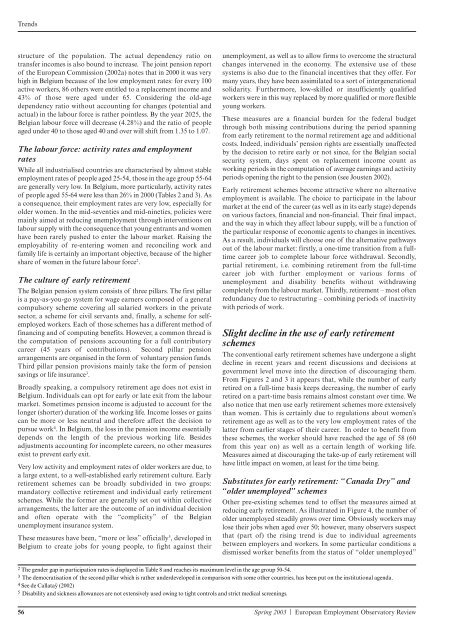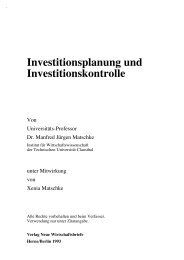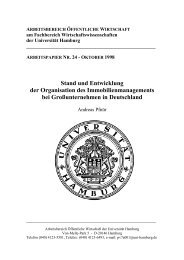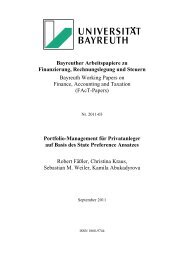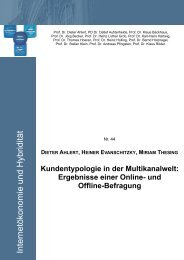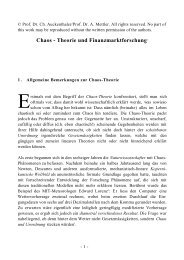FRANCE The
FRANCE The
FRANCE The
You also want an ePaper? Increase the reach of your titles
YUMPU automatically turns print PDFs into web optimized ePapers that Google loves.
Trends<br />
structure of the population. <strong>The</strong> actual dependency ratio on<br />
transfer incomes is also bound to increase. <strong>The</strong> joint pension report<br />
of the European Commission (2002a) notes that in 2000 it was very<br />
high in Belgium because of the low employment rates: for every 100<br />
active workers, 86 others were entitled to a replacement income and<br />
43% of those were aged under 65. Considering the old-age<br />
dependency ratio without accounting for changes (potential and<br />
actual) in the labour force is rather pointless. By the year 2025, the<br />
Belgian labour force will decrease (4.28%) and the ratio of people<br />
aged under 40 to those aged 40 and over will shift from 1.35 to 1.07.<br />
<strong>The</strong> labour force: activity rates and employment<br />
rates<br />
While all industrialised countries are characterised by almost stable<br />
employment rates of people aged 25-54, those in the age group 55-64<br />
are generally very low. In Belgium, more particularly, activity rates<br />
of people aged 55-64 were less than 26% in 2000 (Tables 2 and 3). As<br />
a consequence, their employment rates are very low, especially for<br />
older women. In the mid-seventies and mid-nineties, policies were<br />
mainly aimed at reducing unemployment through interventions on<br />
labour supply with the consequence that young entrants and women<br />
have been rarely pushed to enter the labour market. Raising the<br />
employability of re-entering women and reconciling work and<br />
family life is certainly an important objective, because of the higher<br />
share of women in the future labour force 2 .<br />
<strong>The</strong> culture of early retirement<br />
<strong>The</strong> Belgian pension system consists of three pillars. <strong>The</strong> first pillar<br />
is a pay-as-you-go system for wage earners composed of a general<br />
compulsory scheme covering all salaried workers in the private<br />
sector, a scheme for civil servants and, finally, a scheme for selfemployed<br />
workers. Each of those schemes has a different method of<br />
financing and of computing benefits. However, a common thread is<br />
the computation of pensions accounting for a full contributory<br />
career (45 years of contributions). Second pillar pension<br />
arrangements are organised in the form of voluntary pension funds.<br />
Third pillar pension provisions mainly take the form of pension<br />
savings or life insurance3 .<br />
Broadly speaking, a compulsory retirement age does not exist in<br />
Belgium. Individuals can opt for early or late exit from the labour<br />
market. Sometimes pension income is adjusted to account for the<br />
longer (shorter) duration of the working life. Income losses or gains<br />
can be more or less neutral and therefore affect the decision to<br />
pursue work4 . In Belgium, the loss in the pension income essentially<br />
depends on the length of the previous working life. Besides<br />
adjustments accounting for incomplete careers, no other measures<br />
exist to prevent early exit.<br />
Very low activity and employment rates of older workers are due, to<br />
a large extent, to a well-established early retirement culture. Early<br />
retirement schemes can be broadly subdivided in two groups:<br />
mandatory collective retirement and individual early retirement<br />
schemes. While the former are generally set out within collective<br />
arrangements, the latter are the outcome of an individual decision<br />
and often operate with the “complicity” of the Belgian<br />
unemployment insurance system.<br />
<strong>The</strong>se measures have been, “more or less” officially5 ,developed in<br />
Belgium to create jobs for young people, to fight against their<br />
unemployment, as well as to allow firms to overcome the structural<br />
changes intervened in the economy. <strong>The</strong> extensive use of these<br />
systems is also due to the financial incentives that they offer. For<br />
many years, they have been assimilated to a sort of intergenerational<br />
solidarity. Furthermore, low-skilled or insufficiently qualified<br />
workers were in this way replaced by more qualified or more flexible<br />
young workers.<br />
<strong>The</strong>se measures are a financial burden for the federal budget<br />
through both missing contributions during the period spanning<br />
from early retirement to the normal retirement age and additional<br />
costs. Indeed, individuals’ pension rights are essentially unaffected<br />
by the decision to retire early or not since, for the Belgian social<br />
security system, days spent on replacement income count as<br />
working periods in the computation of average earnings and activity<br />
periods opening the right to the pension (see Jousten 2002).<br />
Early retirement schemes become attractive where no alternative<br />
employment is available. <strong>The</strong> choice to participate in the labour<br />
market at the end of the career (as well as in its early stage) depends<br />
on various factors, financial and non-financial. <strong>The</strong>ir final impact,<br />
and the way in which they affect labour supply, will be a function of<br />
the particular response of economic agents to changes in incentives.<br />
As a result, individuals will choose one of the alternative pathways<br />
out of the labour market: firstly, a one-time transition from a fulltime<br />
career job to complete labour force withdrawal. Secondly,<br />
partial retirement, i.e. combining retirement from the full-time<br />
career job with further employment or various forms of<br />
unemployment and disability benefits without withdrawing<br />
completely from the labour market. Thirdly, retirement – most often<br />
redundancy due to restructuring – combining periods of inactivity<br />
with periods of work.<br />
Slight decline in the use of early retirement<br />
schemes<br />
<strong>The</strong> conventional early retirement schemes have undergone a slight<br />
decline in recent years and recent discussions and decisions at<br />
government level move into the direction of discouraging them.<br />
From Figures 2 and 3 it appears that, while the number of early<br />
retired on a full-time basis keeps decreasing, the number of early<br />
retired on a part-time basis remains almost constant over time. We<br />
also notice that men use early retirement schemes more extensively<br />
than women. This is certainly due to regulations about women’s<br />
retirement age as well as to the very low employment rates of the<br />
latter from earlier stages of their career. In order to benefit from<br />
these schemes, the worker should have reached the age of 58 (60<br />
from this year on) as well as a certain length of working life.<br />
Measures aimed at discouraging the take-up of early retirement will<br />
have little impact on women, at least for the time being.<br />
Substitutes for early retirement: “Canada Dry” and<br />
“older unemployed” schemes<br />
Other pre-existing schemes tend to offset the measures aimed at<br />
reducing early retirement. As illustrated in Figure 4, the number of<br />
older unemployed steadily grows over time. Obviously workers may<br />
lose their jobs when aged over 50; however, many observers suspect<br />
that (part of) the rising trend is due to individual agreements<br />
between employers and workers. In some particular conditions a<br />
dismissed worker benefits from the status of “older unemployed”<br />
2 <strong>The</strong> gender gap in participation rates is displayed in Table 8 and reaches its maximum level in the age group 50-54.<br />
3 <strong>The</strong> democratisation of the second pillar which is rather underdeveloped in comparison with some other countries, has been put on the institutional agenda.<br />
4 See de Callataÿ (2002)<br />
5 Disability and sickness allowances are not extensively used owing to tight controls and strict medical screenings.<br />
56 Spring 2003 | European Employment Observatory Review


